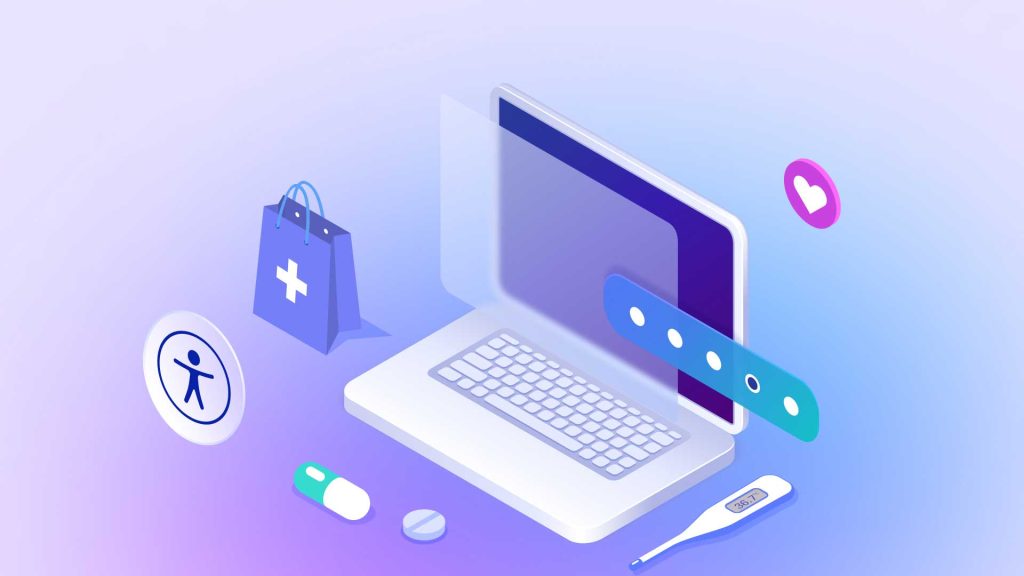Digital healthcare platforms have revolutionized access to medical services, but their value emerges when accommodating patients with diverse disabilities. With prescriptions online services must incorporate comprehensive accessibility features to ensure equal healthcare access for all users, regardless of physical or cognitive limitations. These platforms employ various technologies and design principles that remove barriers and create inclusive experiences for disabled patients seeking medical consultations and prescription medications.
Visual impairment accommodations
Screen reader compatibility represents the foundation of accessible online prescription services for patients with visual impairments. By organizing content consistently, NextClinic enhances usability for individuals relying on keyboard navigation.
- High-contrast colour schemes help patients with low vision distinguish between different interface elements, while customizable font sizes allow users to adjust text according to their visual needs.
- Audio descriptions accompany video consultations, enabling blind patients to follow medical discussions and receive detailed explanations about their prescriptions.
- Voice-guided navigation systems provide step-by-step instructions for completing consultation forms and accessing prescription information.
Many platforms also offer audio playback of prescription details, including medication names, dosages, and administration instructions, ensuring patients receive complete information about their treatments.
Motor disability support
Patients with limited mobility or dexterity benefit from keyboard-only navigation options that eliminate the need for precise mouse movements. Speech commands enable hands-free operation for users unable to use traditional input devices. The following features specifically support motor disabilities:
- Switch-activated controls for patients using assistive devices
- Customizable interface layouts that accommodate one-handed operation
- Extended timeout periods for form completion to accommodate slower input speeds
- Large clickable areas and simplified menu structures
Gesture recognition technology enables patients with limited hand mobility to navigate simple movements, while eye-tracking compatibility allows those with severe motor limitations to control the interface through gaze patterns. These features ensure patients can independently access consultations and manage their prescription needs without caregiver assistance.
Hearing impairment features
Deaf and hard-of-hearing patients require specialized communication tools during online consultations. Real-time captioning services provide accurate transcriptions of doctor-patient conversations, while sign language interpreter integration connects patients with qualified interpreters during video consultations. Visual alert systems replace audio notifications with flashing indicators or vibrating signals that notify patients of essential updates or messages. Text-based chat options offer alternative communication methods for patients who prefer written exchanges over audio conversations. Many platforms provide downloadable transcripts of consultations, allowing patients to review medical discussions and prescription instructions at their own pace.
Cognitive accessibility tools
Patients with cognitive disabilities benefit from simplified language options that present medical information in clear, easy-to-read formats. Step-by-step wizards break complex processes into manageable segments, while progress indicators help users track their location within multi-page forms. Memory aids include automatic form-saving features that preserve partially completed information and reminder systems that prompt patients about upcoming appointments or medication schedules. Picture-based navigation menus use visual icons alongside text labels to improve comprehension, while consistent layout designs reduce confusion across different platform sections. Reading assistance tools highlight essential information and provide definitions for medical terminology, ensuring patients fully comprehend their prescription details and treatment instructions. With these accessibility features, disabled patients can independently access medical consultations and get prescriptions in a dignified and confident environment, breaking down traditional barriers to healthcare.
You may also like
-
Why Are Apple products Popular with Students?
-
CNA vs. HHA: Fast-Track Your Healthcare Career
-
Proactive Sourcing Through Embedded Talent: Building Talent Pipelines that Work
-
How To Choose From The Top Universities In The UK: A 2025 Guide For Global Students
-
Craft Your Resume Using Word Resume Templates: Make Your First Impression Count
 Why Are Apple products Popular with Students?
Why Are Apple products Popular with Students?  CNA vs. HHA: Fast-Track Your Healthcare Career
CNA vs. HHA: Fast-Track Your Healthcare Career  Proactive Sourcing Through Embedded Talent: Building Talent Pipelines that Work
Proactive Sourcing Through Embedded Talent: Building Talent Pipelines that Work 

